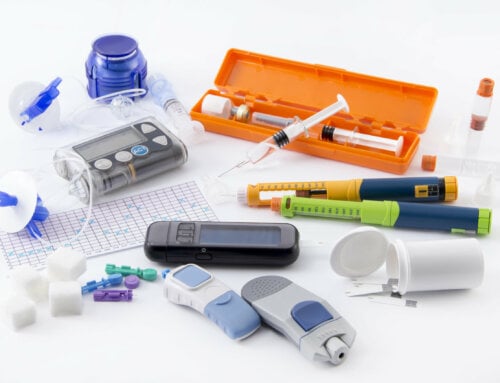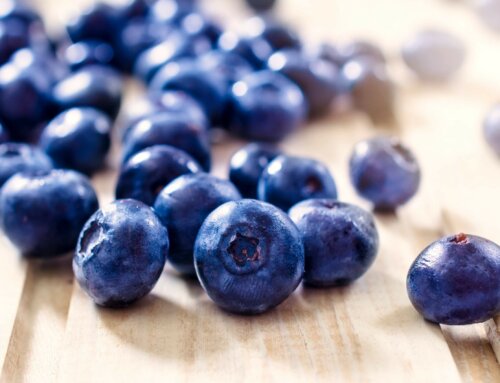Deciding the right foods to eat when you have diabetes can be a challenge. Some foods that sound healthy could be packed with fat, sugar, salt and unwanted calories. Discover which dish is healthier when you have diabetes to make the smartest choices at home and when you dine out.
- People with diabetes should never skip breakfast since it can cause blood sugar fluctuations. The traditional breakfast of three eggs with cheese, two slices of white toast smothered in butter and jam, home- fry potatoes and pork sausage or bacon is loaded with fat, salt and calories. Simple changes can make this breakfast a healthier one such as a three egg white vegetable omelet with two slices of whole grain toast and a slice of Canadian bacon. Another healthy option is a bowl of steel cut oatmeal topped off with blueberries and a handful of walnuts. This will boost your energy with plenty of fiber, protein and antioxidants. Make sure to eat carbohydrates in proper meal portions which can be decided with a diabetes educator or dietitian.
- When lunch time arrives, most people reach for a sandwich. Eat less tuna and egg salad on white bread sandwiches, which tend to be loaded with whole fat mayonnaise. These can be made healthier by using fat-free mayonnaise, lettuce, tomato and whole grain bread. Another great choice is a turkey sandwich served on whole grain pita bread or in a wrap stuffed with vegetables for added fiber. Try to eliminate fried potato chips and soda which often comes with your meal. Add carrots and celery, a piece of fruit with a glass of water or a zero-calorie beverage.
- People with diabetes may need to fit snacks into their day to avoid blood sugar fluctuations and avoid hunger. The worst culprits are packaged, boxed or bagged snacks such as cookies and cakes that are full of unhealthy trans-fats. Portable snacks that won’t compromise your health include fresh fruits with a handful of nuts or a cheese stick with 4 low sodium whole grain crackers.
- Everyone is usually hungry and ready for a complete meal at dinner time. Many times, dinner includes an appetizer, soup or salad, a main course and dessert. Remember, you do not need to eat all courses. Consider the healthiest options as you select each course. For example, often people eat a basket of fried chips and salsa as an appetizer. Swap out fattening tortilla chips for cut vegetables with an ounce of guacamole. Serve a platter of roasted vegetables with fat-free dip rather than fried onion rings.
- Cream soups contain more calories and fat than clear ones. Choose soups that are made with a clear broth. An example is selecting Manhattan clam chowder [red] rather than New England clam chowder. Instead of having cream of broccoli soup, choose vegetable soup with brown rice. Use whole grain noodles in soups instead of white rice and pasta made with refined flour.
- Most people think salads are always a healthy option, but this is not always true. When Cobb salads are topped off with bacon, croutons, fattening cheeses and Thousand Island dressing – they become a poor choice. Certain types of dressing and added fixings can add hundreds of calories and saturated fat to an otherwise healthy bowl of salad. Select a salad with plenty of greens, including romaine lettuce and spinach. Add vegetables such as tomatoes, radish, carrots and red bell peppers for color and flavor. Top it off with a few thin slices of protein such as grilled chicken with fat-free, sugar-free, calorie-free dressing.
- Main courses should be grilled, broiled, baked, steamed or boiled instead of being fried or dripping in heavy sauces. Season your meal with fresh and dried herbs rather than salt. Feast on lean pork tenderloin with Dijon mustard rather than a rack of ribs smothered in barbecue sauce. Add a baked potato or whole grain rice or pasta with olive oil and garlic rather than fried potatoes. Steam or boil fresh vegetables rather than making creamed vegetables.
- Many people need a dessert but remember to factor it in as part of your total meal carbohydrates. Instead of vanilla custard with whipped cream, have a serving of sugar-free raspberry gelatin with a few fresh raspberries. Avoid gooey brownies with chocolate frosting and have an ounce of dark chocolate instead for a healthy dose of antioxidants after your meal. Stay away from apple pie with a huge scoop of ice cream. Eat baked apples with plenty of cinnamon and a tablespoon of chopped walnuts.
Choosing healthy dishes is easy when you have knowledge. Prepare foods in a healthy way. Invest in a diabetes cookbook so you always have delicious, healthy recipes on-hand to help guide your decisions and avoid temptations.







Leave A Comment